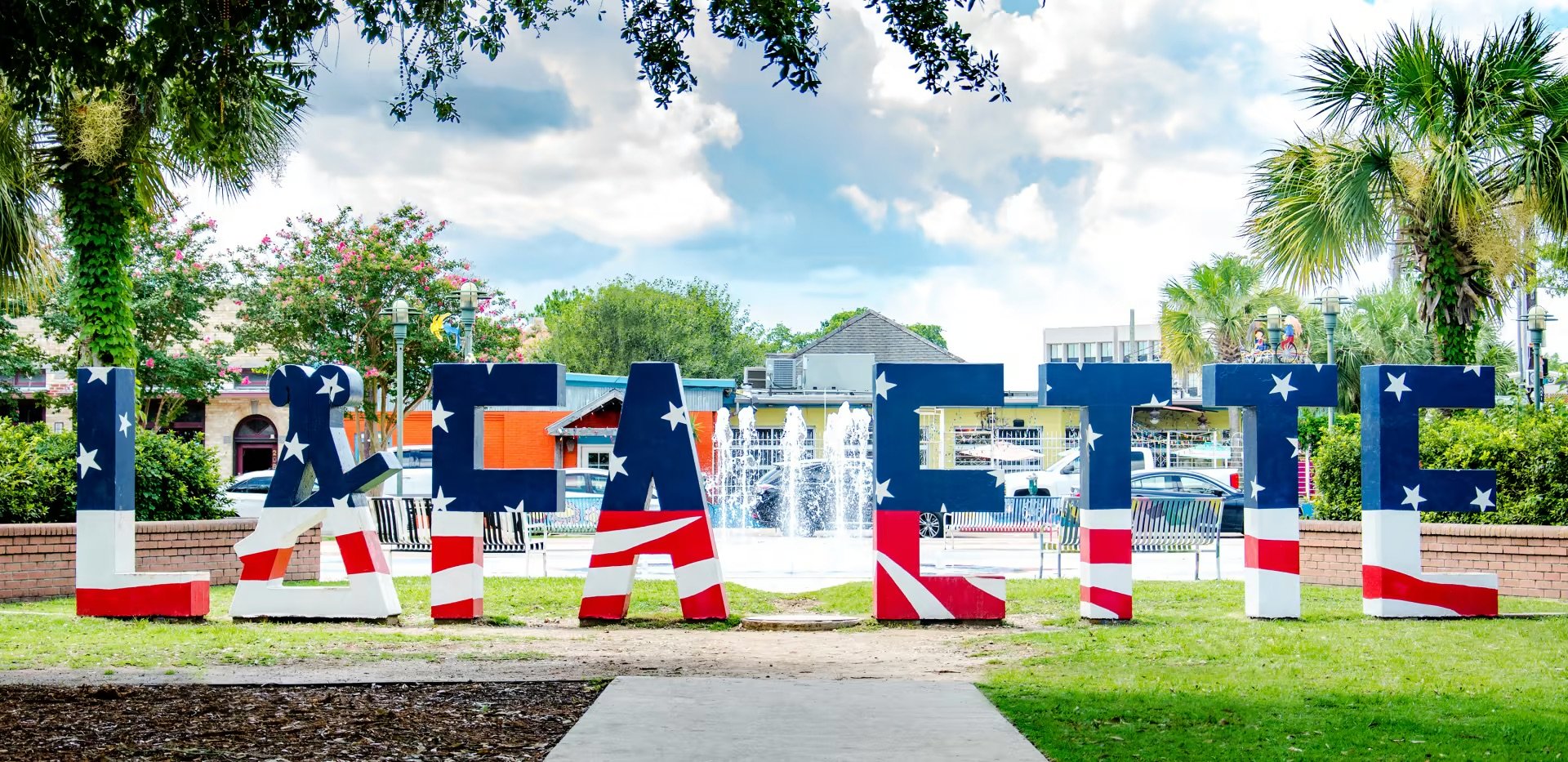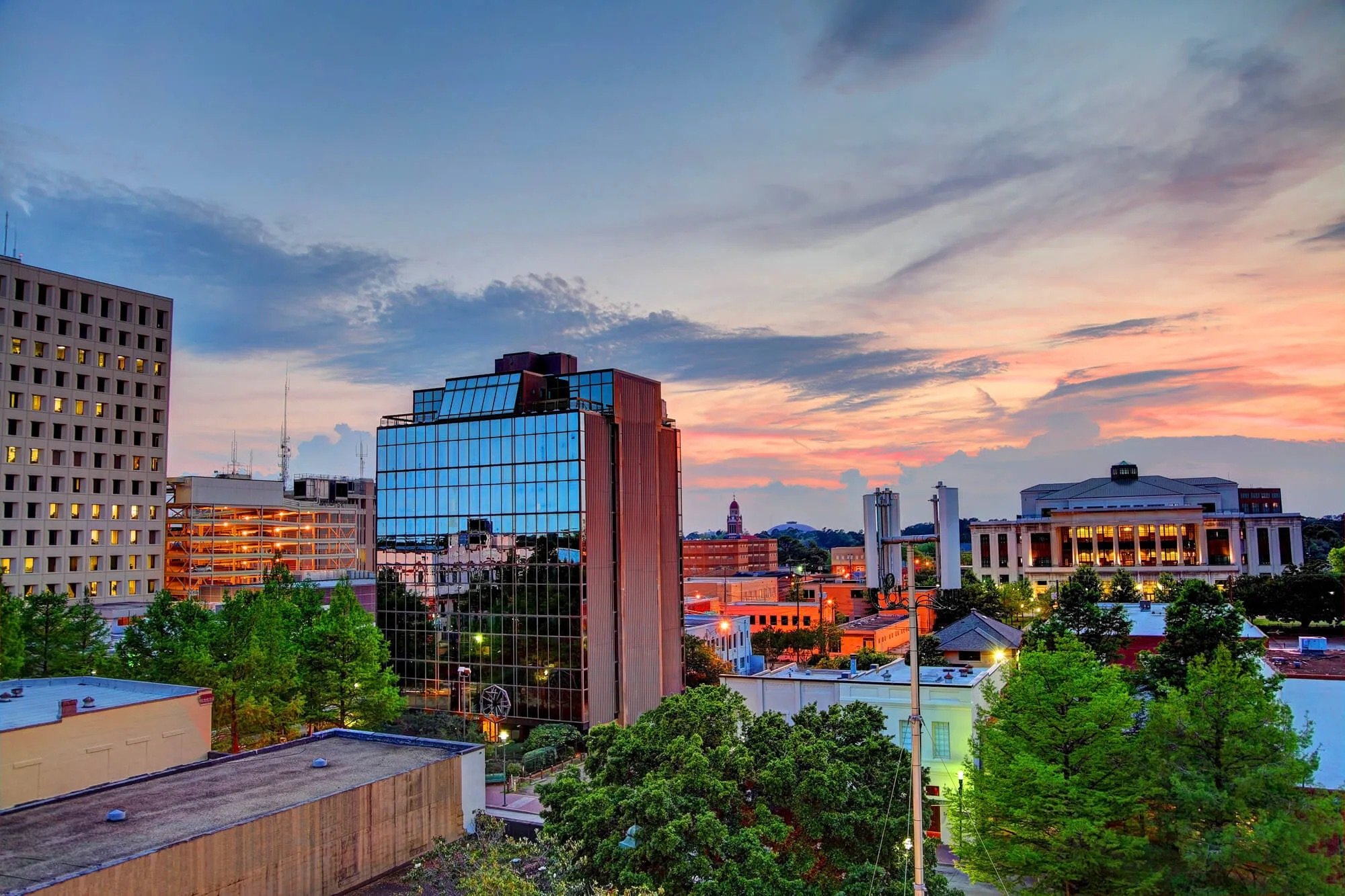From “Fightin’ville” to Freetown: Exploring Lafayette’s Historic Districts This Memorial Day
Let Me Tell You a Story About Lafayette…
Lafayette, Louisiana is more than good food and vibrant music—it’s a place where every street has a story. While it thrives in the present, Lafayette is deeply rooted in history, especially in neighborhoods where military heritage, cultural pride, and community leadership converge.
Let’s take a walk through some of the city’s most iconic neighborhoods. These places don’t just hold homes—they hold legacies.
La Place: A Legacy of Education, Leadership—And Grit
Welcome to La Place, affectionately known as “Fightin’ville.” That nickname isn’t about conflict—it’s a badge of honor, symbolizing the community’s enduring strength, pride, and tenacity through generations.
Established shortly after Downtown Lafayette, La Place became a cornerstone for African American advancement. It was here in 1903 that Lafayette’s first academic school for Black students opened its doors. By 1911, the first African American Catholic Church stood tall as a symbol of faith and unity.
La Place produced leaders, change-makers, and cultural icons. Even during the Civil Rights Movement, its streets echoed with determination as national voices like Dr. Martin Luther King Jr. passed through.
Today, Lafayette proudly honors “Fightin’ville” with the Heritage Walk—a curated path that celebrates the people and places that shaped this bold, beautiful neighborhood.
Freetown-Port Rico: A Story of Resilience and Celebration
Just down the road is Freetown-Port Rico, a district originally settled by formerly enslaved people during the Civil War era. Today, it’s one of Lafayette’s most eclectic and culturally vibrant communities.
Designated a National Historic District, this neighborhood blends historical architecture—like Craftsman bungalows and Tudor-style homes—with modern creativity and community pride. Residents work together through a passionate neighborhood coterie to preserve the character and inclusivity that define this space.
It’s a neighborhood that doesn’t just remember the past—it celebrates it every day.
Sterling Grove: Preserving Historic Elegance
The Sterling Grove Historic District offers a serene retreat into the architectural past. Once home to the estate of Charles Mouton, a former Louisiana lieutenant governor, this neighborhood now holds over 50 historically preserved homes ranging from Greek Revival to Colonial styles.
Listed on the National Register of Historic Places, Sterling Grove showcases Lafayette’s roots in a quiet, residential setting where time seems to stand still.
Downtown Lafayette: A Cultural Crossroads
Downtown Lafayette isn’t just the city’s business hub—it’s the historical heart with deep military roots. Once part of the Attakapas region, the area played a significant role during various military movements, including serving as a vital crossroads during the Civil War.
Today, it’s a vibrant mix of heritage and innovation. Restored storefronts stand where supply routes once ran, and cultural festivals now echo the resilience of a community shaped by history. For anyone looking to understand both where Lafayette started and where it’s headed, this is the place to be.
Bendel Gardens: From Plantation Roots to Riverside Peace
Once known as Walnut Grove Plantation—an estate of strategic importance during the Civil War—Bendel Gardens has evolved into one of Lafayette’s most serene and picturesque neighborhoods. Situated along the banks of the Vermilion River, this area is now known for its grand, oak-lined streets and graceful, historic homes.
What was once a pivotal piece of farmland during wartime is today a peaceful residential enclave. The legacy of its past lives on in the magnolia-lined drives and the quiet dignity that surrounds every corner of the community.
Why These Neighborhoods Matter
These aren’t just neighborhoods—they’re living legacies. Each one is a tribute to the people, sacrifices, and stories that built Lafayette. Whether you’re a homebuyer looking for character, a history buff exploring the past, or a resident appreciating your roots, Lafayette’s historic districts offer a rich and resonant experience.
FAQs
-
Absolutely! Many of Lafayette's historic neighborhoods are open to the public year-round. You can explore areas like Downtown Lafayette and Freetown-Port Rico on your own or participate in guided tours. For instance, the Downtown Lafayette Cajun History & Folklore Walking Tour offers insights into the area's rich history. Additionally, Vermilionville provides a living history experience with restored 18th and 19th-century homes.
-
The Alexandre Mouton House, also known as the Lafayette Museum, is a prime destination. Built around 1800 by Jean Mouton, one of Lafayette's founders, the museum showcases artifacts and exhibits related to the Mouton family's involvement in Louisiana's history, including the Civil War. For broader cultural insights, consider visiting the Acadian Cultural Center, which delves into the region's Cajun and Creole heritage.
-
Occasionally, yes—and they’re often highly sought after. If you’re interested, contact me today to get started and stay ahead of new listings!







